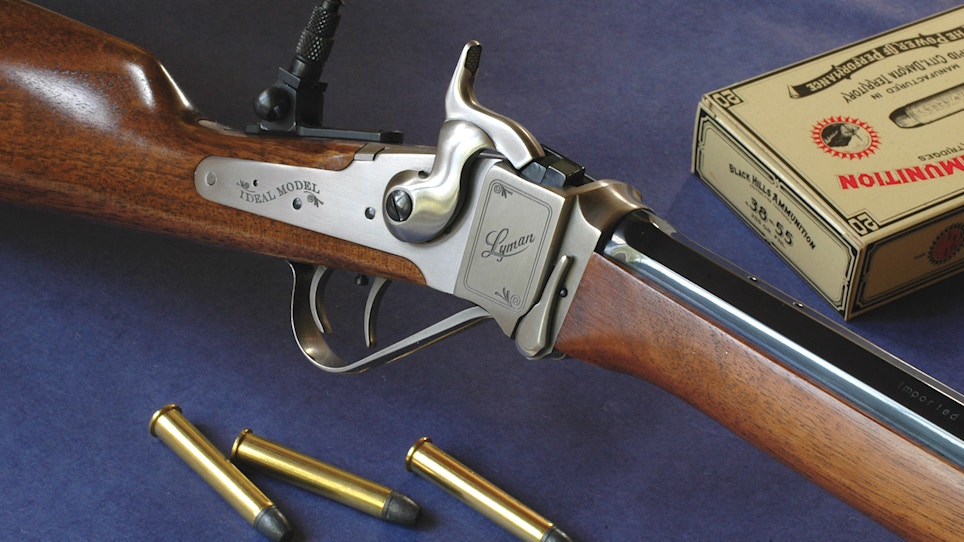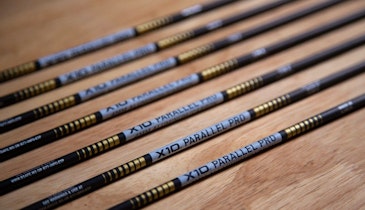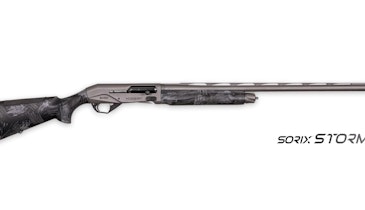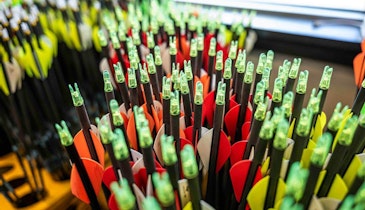Even rocks age; most things age faster — cheese, bourbon, knees and memory for example. A little time can season leather, lumber and marriage; decades of wear and tear probe their flaws. Race horses and retrievers have a short peak in the arc of time. Graceful aging adds value to automobiles and actresses. And rifles.
The older I get, the greater the appeal of obsolete rifles. Not to disparage new models; even the ugliest can shoot accurately and endure some abuse. But the elegance of earlier rifles seduces. In the past couple of years, I’ve spent most of my field time with rifles built before WWII. An 1899 Savage in .25-35, an 03A3 Springfield rechambered to .30 Gibbs, a Winchester 75 Sporter in .22 LR. Next from the loading bench: ammo for a Neidner-barreled Winchester 1885 High Wall in .25 Short Krag.
Sure, I’m pleased by the 0.2-inch five-shot knot cut by a Proof Research rifle in 6mm Creedmoor. But off the range, a slim, carnivorous profile and warm walnut trump carbon fiber, polymer and one-hole groups. A rifle should be as fun to carry as to fire, a treat to admire in hand.
Archetypes of the Kentucky rifle qualify, but few predator hunters will trade their ARs for front-loaders, original or replica. A century is time-travel enough.
On the cusp of the Great War, one in four rifles sold in the U.S. was a Winchester. The dynasty had begun with New York inventor Walter Hunt whose 1849 “Volitional Repeater” used external priming to ignite powder in hollow-base bullets. The lever rifle’s tube magazine survived improvements by Lewis Jennings. Oliver Winchester bought what had become the Volcanic Arms. Shop foreman B. Tyler Henry earned an 1860 patent for his 15-shot .44 rimfire on Hunt’s design. Its rate of fire struck fear deep into the Confederacy. The Henry sired the Model 1866, the first rifle from Winchester Repeating Arms. The 1873 on its heels fired Winchester’s first centerfire cartridge, the .44-40. The 1876 in .45-75 WCF took bigger game.
In the early 1880s Winchester Vice President Thomas Bennett bought all rights to a single-shot rifle by young Ogden, Utah, gunsmith, John M. Browning. At Bennett’s request, Browning next fashioned a lever-action with the sliding vertical lugs of the single-shot (sold as Winchester’s 1885). The resulting 1886 rifle tapped the punch of the .45-70, .45-90, .50-110. Bennett was delighted. “I’ll pay $10,000 for a scaled-down 1886, if you get it to me in three months.” Browning replied, “The price is $20,000 for delivery in 30 days. If I’m late, it’s free.” In two weeks Browning and his brothers built the 1892. It was an instant hit. The subsequent 1894 fired the .30-30, our first smokeless centerfire hunting round.
As Winchester found its feet, John M. Marlin was building lever rifles to compete. Turning 18 in 1853, he apprenticed as a machinist for $1.50 per week! His top-ejecting Model 1881 in .40-60 or .45-70 prefaced the L.L. Hepburn-designed, short-action 1888, and the 1889, which spit empties to the side. The Marlin/Hepburn 1893 rifle challenged Winchester’s 1894. In the 1930s it begat the Models 1936 and 336.
Arthur Savage, born on the eve of the Civil War, unveiled a hammerless lever rifle in 1892, but U.S. ordnance trials favored the Krag-Jorgensen bolt gun. Undeterred, Arthur formed Savage Repeating Arms Co. in Utica, New York. Marlin Firearms Co. supplied tooling and built the first 1895 side-ejecting Savage rifles, bored for the then-new .303 Savage cartridge. A through-bolt secured stock to receiver. A rotary magazine accepted pointed bullets. Improvements would produce the 1899, then, in 1920, the Model 99.
Shooters unmoved by history discover those old rifles can shoot well too! A tired Savage 1899 in .303 blessed me with 1-MOA knots. Ditto a much-used Winchester 1892 in .25-35. Both with tang sights.
Like-Minded Riflemen
I didn’t have to look far to find like-minded riflemen for a recent pronghorn hunt. The only rifle in our battery not of original manufacture was a Uberti replica of a Winchester 1876. Dave’s handloads for the .40-60 launched 210-grain lead flat-points. Mike and Dennis shared an 1886 Winchester, a .38-56 firing 255-grain jacketed flat-points. The rest of us filled magazines with Hornady .25-35 LEVERevolution cartridges. Nick and Brian cradled 1894 Winchesters. Larry’s 1893 Marlin in .25-36 accepted .25-35 ammo. All of us would take bucks with those old lever rifles.
Yes, the Hornady ammo gave an edge to our .25-35s. Soft-polymer tips of FTX spitzers compress when stacked in tube magazines, resuming their pointed shape in the barrel. That profile, and faster starts, mean flatter flight from the traditional lever-gun cartridges that inspired LEVERevolution loads. They’ve re-introduced hunters to the wand-like feel of saddle guns, to the thrill of stalking – or calling – animals inside iron-sight range.
Alas, I came to lever-actions late. For a couple of decades after Winchester’s overhaul of the 94 in 1964, second-hand rifles remained affordable. No more. Prices have shot up. Less common smokeless Winchesters, from the 1892 to the 71, now start in four figures. Fine specimens make divorce look cheap.
But bolt-actions from yesteryear win hearts too. Recently offered the use of an original Newton rifle for an afternoon, I snapped it up. It was bored to .256 Newton, a 6.5mm far ahead of its time (1920s). The kill I made at dusk with that iron-sighted rifle is etched deep in memory!
A re-stocked SMLE in a used-gun rack reminded me so much of my first centerfire rifle that I bought it. A 1903 Springfield served wonderfully in the far North. Ditto an 8mm Mauser in Africa. All wore iron sights. At home, my go-to coyote rifle dates to the 1940s.
Any 1950s list of popular predator rifles includes Sako’s Vixen. Imported by Stoeger beginning in ’46, this accurate, beautifully finished bolt gun was initially bored to .22 Hornet or .218 Bee. Later it chambered the .222, .222 Magnum, .223. In 1957, Sako added its L-57 Forester, proportioned for the then-new .308 and .243 Winchester. L-57s were produced in .22-250 as well. Vixens and early L-57s in boxed condition now bring many shekels, but a little honest field wear can make them affordable.
Remington’s 722/721 series arrived in 1948; a plain-Jane predecessor to the 700 introduced in ’62. Chamberings in the short-action 722 included the .222, .244 (6mm Rem.) and .257 Roberts. Only about 3,800 .222s were built, so those command a premium. I had a .244 (made 1957 to ’62) that shot very well.
A pal in Durango, Colorado, indulged his nostalgia with a slide-action rifle. “I wanted a fast-firing repeater that would hit hard enough to take tough African game,” said John Dustin. He started with a used Remington 7600, offspring of the popular 760 Gamemaster (introduced in 1952, progeny of the Models 14 and 141). It’s both ordinary and the only modern slide-action centerfire built in the U.S. Lockup is strong, with a multiple-lug, rotating bolt. John rebarreled his rifle to the huskiest round that would cycle reliably. The 9.3x62 necked to .375 hurls 300-grain bullets – “a real thumper,” grins John.
Second-hand rifles bored for wildcat cartridges can save you money! I recently snared an 03A3 Springfield in .30 Gibbs, fashioned by moving the shoulder forward on .30-’06 brass. Redding and RCBS can furnish dies for this and just about every wildcat you can imagine. While handloading boosts personal investment in any rifle, wildcats also return you to another bench, to pioneer beyond the limits of factory-loaded cartridges of that day. For me, the Gibbs brought images of Rocky Gibbs hot-rodding loads in his Viola, Idaho, shop during the 1950s, unaware of the cancer that would take him off the range too early.
Beauty and the Beholder
Rifles from times past include the rough and the minty, the common and the collectible. Pricing reflects market value, not necessarily a rifle’s utility. Explore those waters with S.P. Fjestad’s Blue Book of Gun Values (dictionary-thick and now marking its 38th edition). Then heed these tips when a second-hand firestick looks up with pleading eyes.
Gently cycle the bolt or open the breech. Look, listen and feel for hitches. Rear-of-stroke wobble is normal in bolt-actions, especially Mausers, but lock-up should be solid. Hinged-breech guns mustn’t wiggle at all when closed. Levers on lever-actions shouldn’t sashay in the shuck or at home. Check half-cock notches, safeties and triggers for sure engagement and crisp, consistent release.
With permission, run a snug, lightly oiled patch through the bore to feel for tight and loose spots. Then, in appropriate lighting, inspect the crown and rifling. Beware nicked muzzles, shadowy throats, any smudge or crease in the chamber. Exterior rust is your signal to look really hard at the bore and chamber!
Rifles priced as collectible must be original from stock finish to fittings such as butt-pads and sights. If bluing gleams a bit too brightly or appears off-color, or if surface wear on wood and metal don’t match, examine barrel and receiver stamps. After-market buffing dulls edges, so letters lose their crisp look.
Many moons ago I refurbished stocks for a gun-shop, raising dents with an iron on a damp towel and block-sanding scratches before rubbing in multiple coats of boiled linseed oil. I scrubbed checkering with paint remover on a toothbrush, then brushed in a coat of new finish, wiping off the excess. Rubbing boiled linseed oil in until your hand is hot can rejuvenate some tired stocks without a refinish. Polish dry.
Shopping Around?
If you can’t examine the rifle tempting you – say, one from an internet ad – ask these questions:
1) What is the rifle’s condition by NRA standards?
Hardware that looks perfect to a seller may seem rough to a buyer. And these days “excellent” is tossed about as airily as “awesome.” NRA’s “excellent” means the rifle is almost like new.
2) Is the gun sound? Original? Complete?
Be specific: Reference details such as front sight hoods, after-market holes and cuts, glass bedding, recoil cracks in the stock’s tang, cosmetic damage and repairs.
3) Have you handloaded for the rifle? Has it ever failed to function?
You want to know of any problems, however slight and however smoothly explained away. Steer clear of rifles that have endured ambitious handloads. Blown primers and stuck cases can lead to damage.
4) Are you the original owner? How did you acquire the rifle? When did you first list it for sale?
You don’t want to buy a stolen firearm! If the rifle is a good buy, you should know why it hasn’t yet sold. Price negotiations often start there!
The rifle you carry is in some measure a reflection of how you view the hunt. You can relish an old rifle’s link with history, stories in blue worn thin and walnut scarred, the handicaps imposed by sights and ammunition from yesteryear, or you can tap the superior reach of modern rifles and optics. In other words, you can test your skills against the senses of your quarry, or compete with riflemen tapping their smart phones for ballistic data.
There’s still room for both camps afield, and still time for the young to age.






